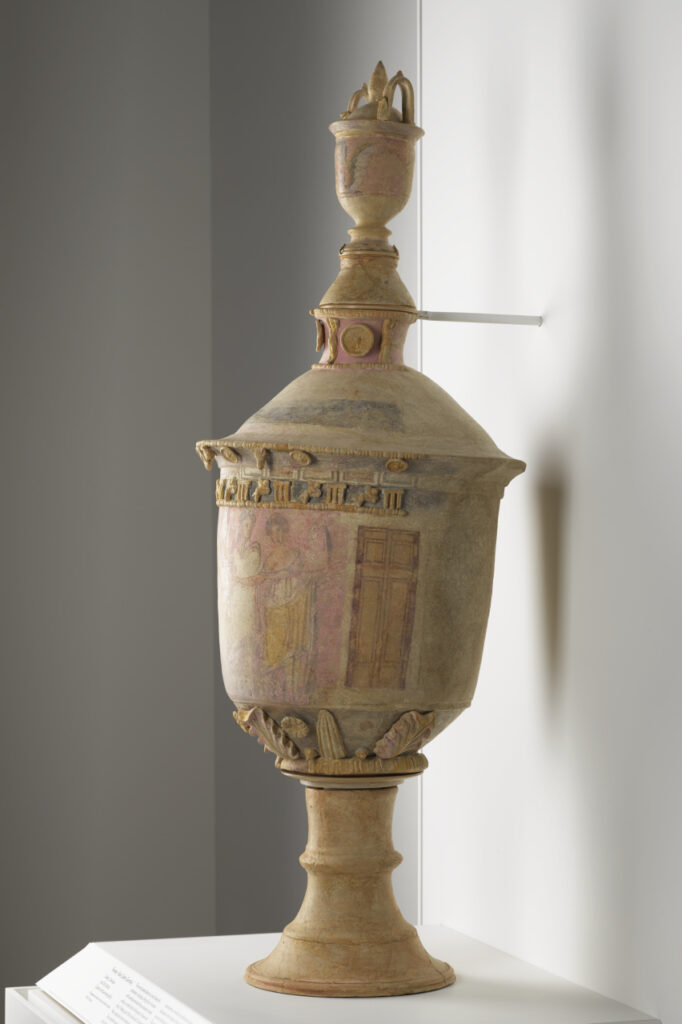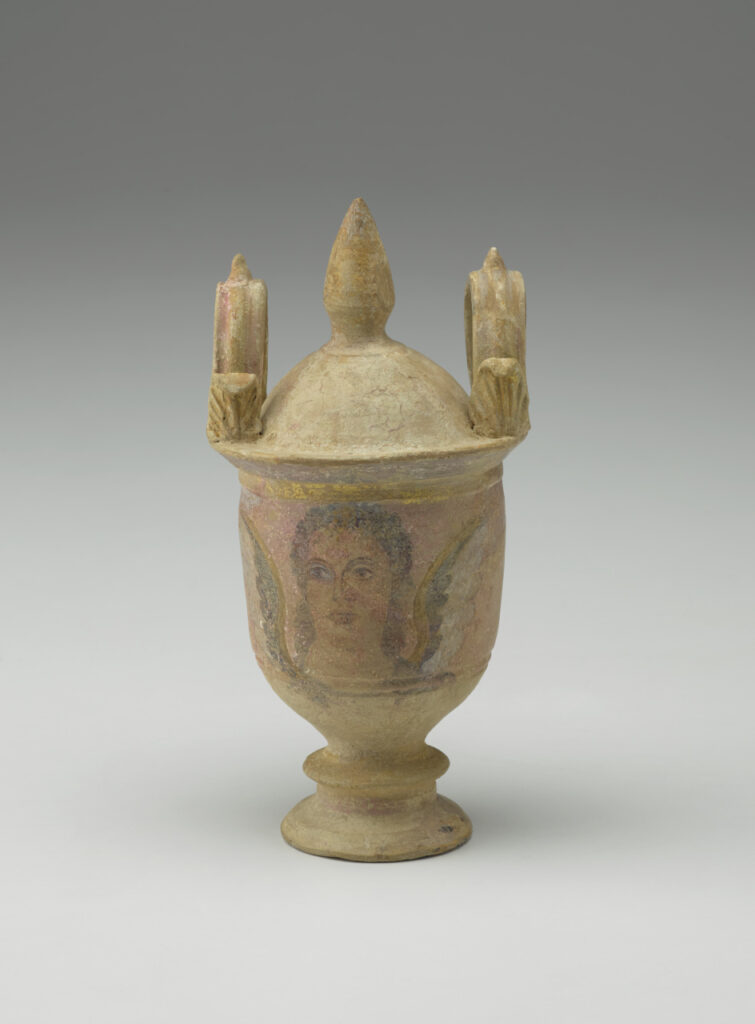Funerary Vase (Lebes Gamikos) (work of art)
Artwork Info
Key Ideas
- This vessel is especially fragile. It is made up of separate pieces that are stacked on top of each other and decorated in fine detail. It would have been used for ceremonial purposes only.
- This is a funerary vessel associated with women and marriage. Vessels like this may have been given to young women who died unmarried. Or they might have been wedding gifts that were treasured and then buried with their owners.
- Madder dye was used to decorate this vase. The dye comes from the madder plant, which produces a deep-red dye. The madder dye used on this object has faded to pink over time because it has been exposed to light.
- This type of dye was popular in ancient Egypt and other Mediterranean cultures.
- The madder dye used on this vessel depicts either red walls or red curtains. These were status symbols that indicated wealth in ancient Greek and Roman cultures.
Learn More
This funerary vase is made from multiple parts that are stacked on top of each other. It is a fragile object that would have been used for ceremonial purposes rather than as a functional, everyday item. The vase is decorated with delicate, three-dimensional decorations painted in bright colors and gilding (a thin layer of gold). These decorations mimic shapes from classical architecture.
The central part of the vase features a painted scene. It depicts an ancient Greek bride in her bedroom, preparing for her wedding. Death and marriage were considered the two most important changes of status in an ancient Greek woman’s life. Bridal scenes and mythical weddings were typically depicted in bright colors on funerary vases. This type of vase may have been given to a bride as a wedding gift (and later buried with her when she died) or buried with an unmarried woman.
The faded red background on this vessel was colored with madder dye. Dye from the madder plant has been used since at least 1500 BCE in ancient Egypt and other Mediterranean cultures. The madder plant is easy to grow, but processing it into a dye was a difficult and time-consuming process. Products dyed with madder were often very expensive.
Madder, like all dyes, can be made into paint by dyeing a colorless particle such as chalk or alum. A pigment made from a dye is called a “lake.” The madder used on this object depicts either red walls or red curtains. These were symbols of high status and wealth in ancient Roman society. Madder is somewhat fade-resistant for a natural dye, but the color does fade over time when it is exposed to light. This is why the red background on this vessel appears to be more pink than red. A synthetic method of making alizarin (one of madder’s main colorants) was developed in 1868. This invention made it easier and less expensive to create red dye. It also ended the cultivation and trade of madder.
Additional Resources
Resources for Teachers
- Read an article about ancient Greek wedding practices.
- View another lèbes gamikòs at the Metropolitan Museum of Art.
Resources for Students
- View a similar vessel at the Metropolitan Museum of Art.
- Explore a resource from the NCMA to learn more about madder.
Images
-

Funerary Vase (Lebes Gamikos)
An ancient ceramic vessel supported by a plinth and set against a white background. The vessel is made of multiple parts that are stacked on top of each other, with attached decorative pieces that are painted and gilded. The central body of the vase features a painted scene. It depicts an ancient Greek bride preparing for her wedding, surrounded by attendants. The background of the scene is pink in color. The body of the vessel rests on top of a fluted base. There is a separate, miniature vase in the shape of a funerary vase on top of the larger vase. It depicts the head of a winged female figure.



